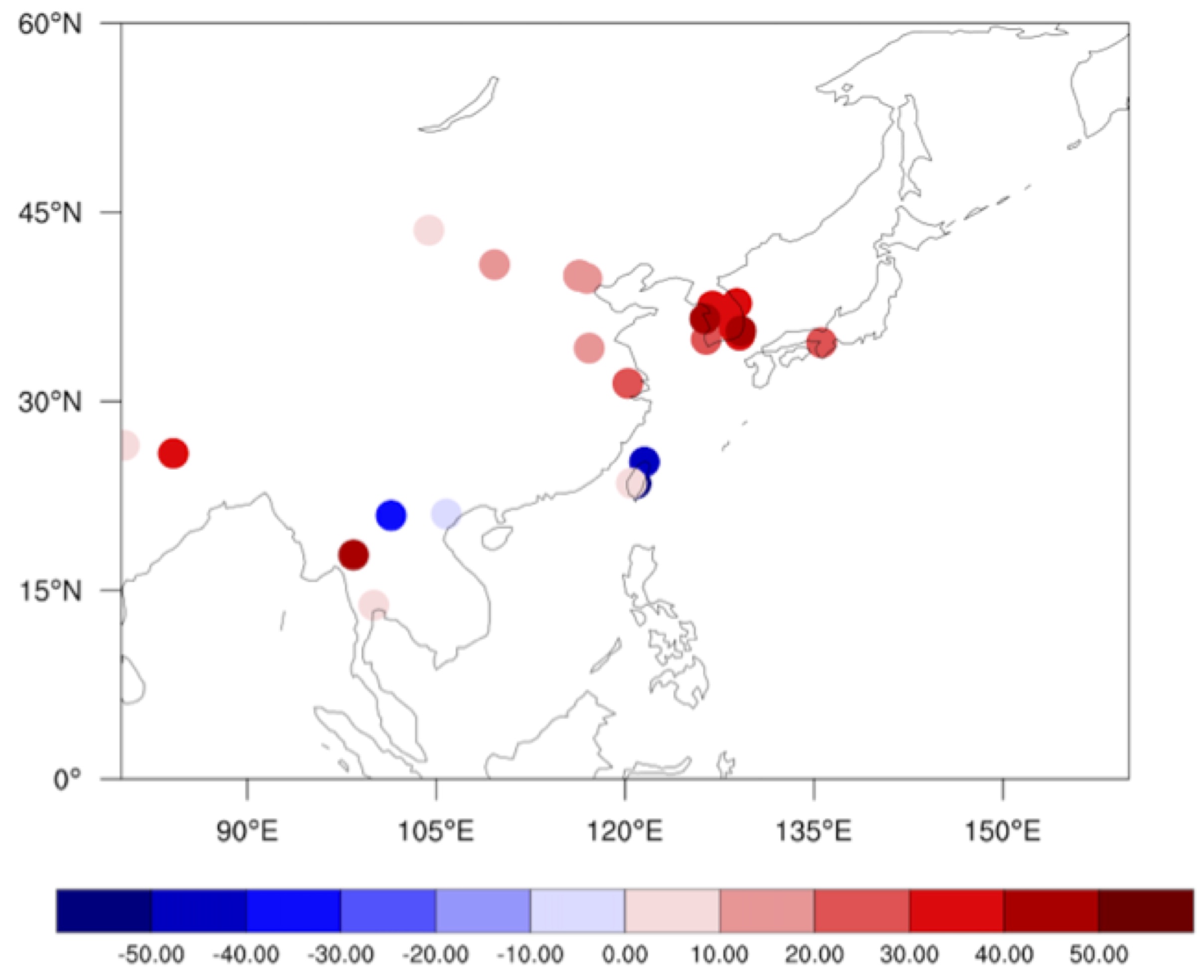Atmospheric Environmental Monitoring Simulation
JAXA Supercomputer System Annual Report April 2017-March 2018
Report Number: R17ER2401
Subject Category: Space Technology
- Responsible Representative: Teruyuki Nakajima, Earth Observation Research Center
- Contact Information: Maki Kikuchi kikuchi.maki@jaxa.jp
- Members: Kentaroh Suzuki, Daisuke Goto, Maki Kikuchi, Tomoki Fujiwara, Masamitsu Hayasaki, Tie Dai, Yueming Cheng
Abstract
This project is aimed at development of an integrated system of numerical modeling and satellite observation of air pollution for its reliable monitoring and prediction. For this purpose, seamless atmospheric modeling system is operated on JSS2 to conduct simulations of air pollution transport over East Asia. The results are also validated against satellite observations of aerosols.
Reference URL
N/A
Reasons for using JSS2
In the project, we need to conduct numerical simulations with high spatial resolutions over wide area including Japan and East Asia for reliable monitoring and predictions of air pollutions over the region. This requires us to exploit high performance super computing resources of JSS2 available at JAXA.
Achievements of the Year
In this fiscal year, we have continued operations of simulations with the NICAM-SPRINTARS model that has been installed on JSS2 last fiscal year. Regional simulations have been conducted over Japan area to investigate how aerosols are transported in the area. The simulation results were validated with Himawari-8 satellite observations in the form of the joint probability distribution functions of aerosol optical thickness (AOT), which depicts statistical evaluations of the model against satellite data (Fig. 1). Also shown in the figure are the isolated probability distribution functions of model-based and satellite-based AOTs separately, together with quantitative numbers for mean, skewness and kurtosis of AOTs. These comparisons expose how the model tends to overestimate AOTs relative to satellite observations over the target area and how the statistical behaviors obtained from high spatiotemporal resolutions data are different in the model from satellite measurement. Such a comparison enables us to better evaluate and constrain the model in the context of its representation of detailed characteristics of aerosol transport processes through evaluations with unprecedentedly high spatiotemporal resolution measurements available from Himawari-8. The model-satellite synergy has further been explored in this fiscal year through testing data assimilation experiments. Namely, the Himawari-8 satellite-derived AOTs were assimilated into NICAM-SPRINTARS to better predict the aerosol transport characteristics over the Japan area. An example of the results is shown in Fig. 2, which describes how the simulations with assimilation better represents the time series of AOT at a particular location (Osaka in this case) against AERONET ground-based measurements, compared to those without assimilation. The assimilation results were also evaluated at a broader spatial scale as shown in Fig. 3 in the form of the assimilation efficiency that quantifies how much error reduction occurs. The figure illustrates that time series of AOTs at multiple locations are consistently improved through assimilation. These results demonstrate how the aerosol modeling system is now appropriately operating in JSS2 and how it is unified with Himawari-8 satellite measurements through assimilations for better predictions of aerosol pollutions over Japan area.

Fig.1: Joint probability distribution function (PDF) of aerosol optical thickness (AOT) obtained from the NICAM-SPRINTARS model (ordinate) and the Himawari-8 satellite observations (abscissa) shown in color, and each PDF separately for the model and satellite ob

Fig.2: Time series of AOT at Osaka obtained from NICAM-SPRINTARS model simulations with and without assimilation of Himawari-8 data. Black circle indicates the AERONET ground-based measurements of AOT.

Fig.3: Assimilation efficiency of aerosol optical thickness obtained from the assimilation experiment with NICAM-SPRINTARS against AERONET ground-based measurements. The red color indicates that the assimilation reduces the model error relative to the ground-bas
Publications
■ Presentations
1) Goto D., Kikuchi M., Suzuki K., Hayasaki M., Yoshida M., Nagao T., Sugimoto N., Shimizu A., Nakajima T. (2017) Model evaluation using a geo-stationary satellite and in-situ measurements around Japan in May 2016, 2017 American Geophysical Union (AGU) Fall Meeting, New Orleans, USA, December 2017
Usage of JSS2
Computational Information
- Process Parallelization Methods: MPI
- Thread Parallelization Methods: N/A
- Number of Processes: 32 – 160
- Elapsed Time per Case: 3.50 hours
Resources Used
Fraction of Usage in Total Resources*1(%): 0.06
Details
Please refer to System Configuration of JSS2 for the system configuration and major specifications of JSS2.
| System Name | Amount of Core Time(core x hours) | Fraction of Usage*2(%) |
|---|---|---|
| SORA-MA | 254,366.99 | 0.03 |
| SORA-PP | 2,020.05 | 0.03 |
| SORA-LM | 0.02 | 0.00 |
| SORA-TPP | 0.00 | 0.00 |
| File System Name | Storage Assigned(GiB) | Fraction of Usage*2(%) |
|---|---|---|
| /home | 1,645.09 | 1.14 |
| /data | 26,248.94 | 0.49 |
| /ltmp | 12,695.32 | 0.96 |
| Archiver Name | Storage Used(TiB) | Fraction of Usage*2(%) |
|---|---|---|
| J-SPACE | 0.00 | 0.00 |
*1: Fraction of Usage in Total Resources: Weighted average of three resource types (Computing, File System, and Archiver).
*2: Fraction of Usage:Percentage of usage relative to each resource used in one year.
JAXA Supercomputer System Annual Report April 2017-March 2018


